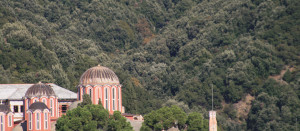
비잔틴 황제 바실 1 세는 아토스 산 반도 입구의 유일한 권리를 가지고 승려들에게 수여했다 885 기원 후. 그들은 번성하는 종교 공동체를 만들고 그 이후로 생태계를 유지하고 보호했습니다.. 그들의 관리는 주로 출입 통제 및 목재 관행 규제로 구성됩니다.. 반도는 공식적으로 유네스코 세계문화유산과 자연유산으로 지정되어 있습니다. 2000 대지, 그러나 두 명칭 모두 승려들의 협의를 거쳐 정해지지 않았습니다.. 그래도 여전히, 에 1926 그리스 헌법은 승려들이 유적지 관리에 대한 전적인 책임을 갖고 있음을 인정했습니다..
동방 정교회 유적지에는 총 20개의 수도원이 있습니다.. 승려들은 산의 생태계에 영적인 중요성을 부여하고 이를 보호하는 것이 자신들의 신성한 목적이라고 생각합니다.. 수도원은 또한 에너지 수요를 자급자족하며 자체적으로 음식과 약초를 생산합니다.. 자치 수도원은 성 공동체라는 협력을 통해 자연을 보호하기 위해 노력합니다..

이 수도원은 홀름(Holm) 숲과 헝가리 참나무 숲을 포함한 언덕을 배경으로 자리잡고 있습니다.. 그 숲은 생태학적으로 중요할 뿐만 아니라, 또한 후지산의 수도원 공동체를 위해 절실히 필요한 건축 자재와 경제적 수입을 예측합니다.. 아토스
승려들은 과학자들과 협력하여 산불, 토양 부족 등 현장별 생태계 위협에 대한 지식을 얻습니다.. 예를 들면: 생태학적 연구는 승려들에게 쓰러뜨려야 할 나무 종과 화재 위험을 줄이는 방법에 대해 알려줍니다.. 이 지역을 보호하려는 승려들의 이러한 적극적인 태도와 지속적인 헌신은 다른 국제 행위자들과의 추가 협력 가능성을 보여줍니다., 유네스코, IUCN 등.
씨. Thymio Papayannis 성 공동체의 보존 관리에 대한 자문가였으며 씨. 조셉-마리아 말라크 조정하다 델로스 이니셔티브 후지산에서 무서운 자연유산 관리에 관한 두 번째 워크숍을 개최했습니다.. 아토스. 해당 지역의 역사나 생태학 연구 결과에 대한 자세한 내용은 다음을 참조하세요. 우리 웹사이트.
~에 의해: Rianne Doller






